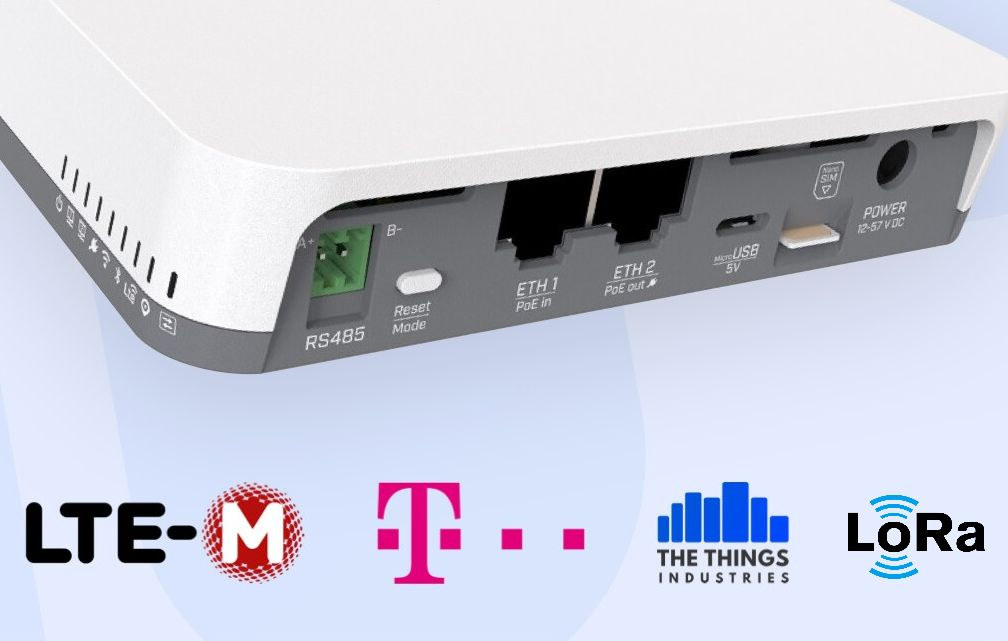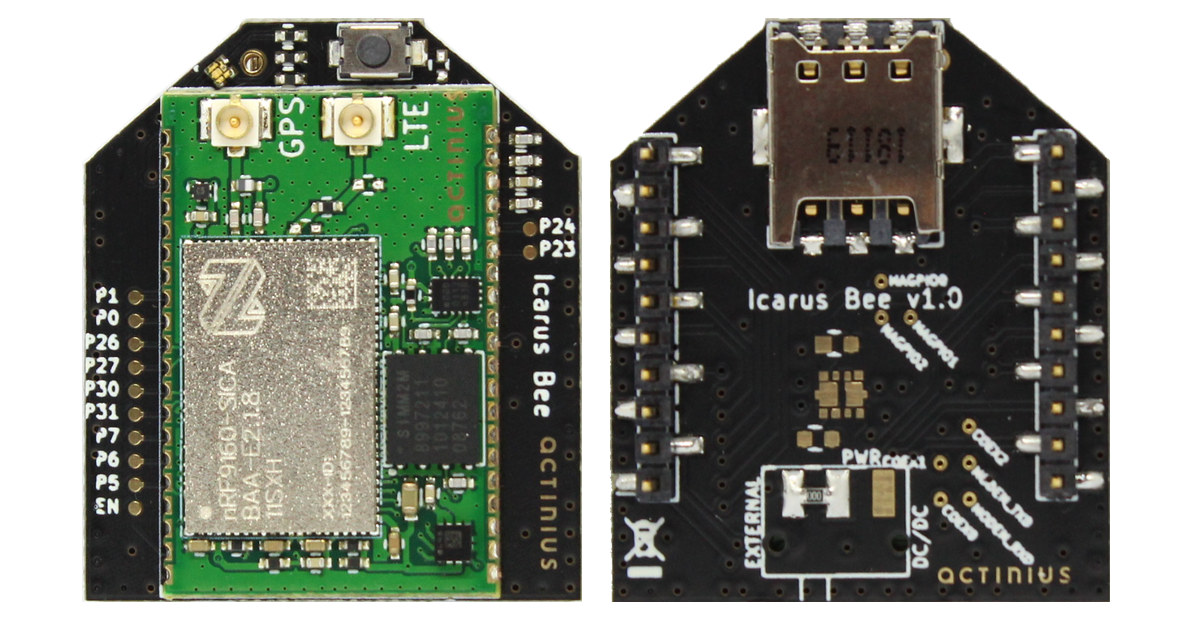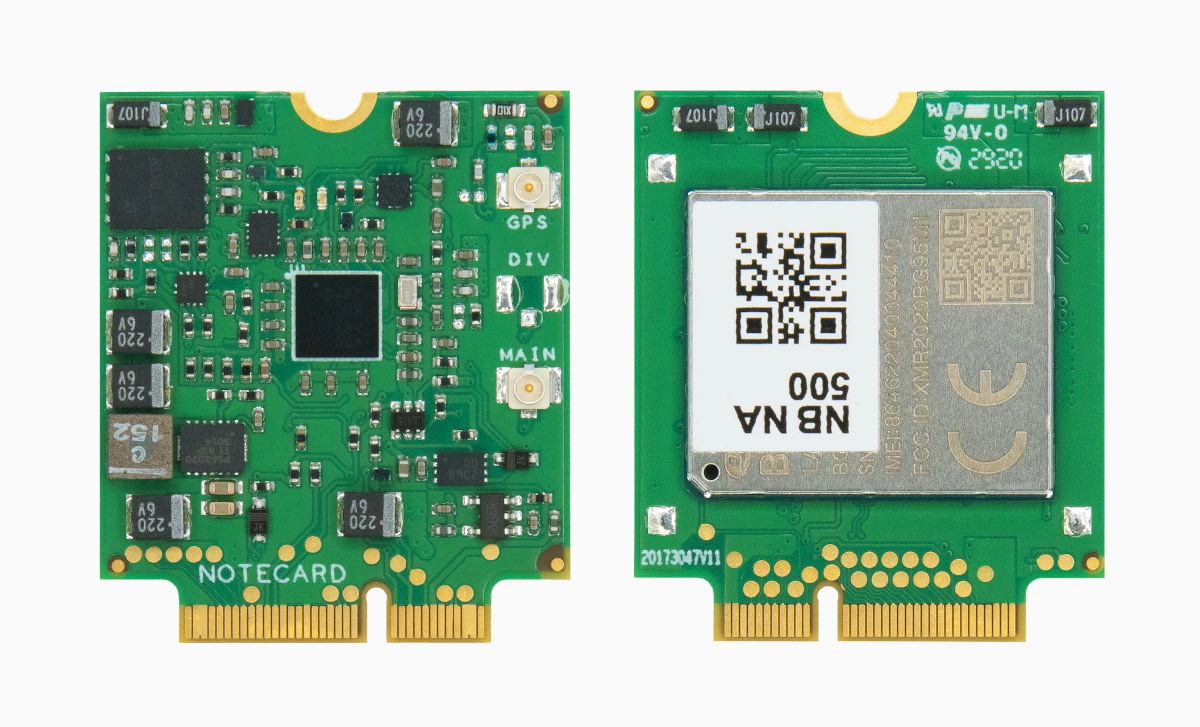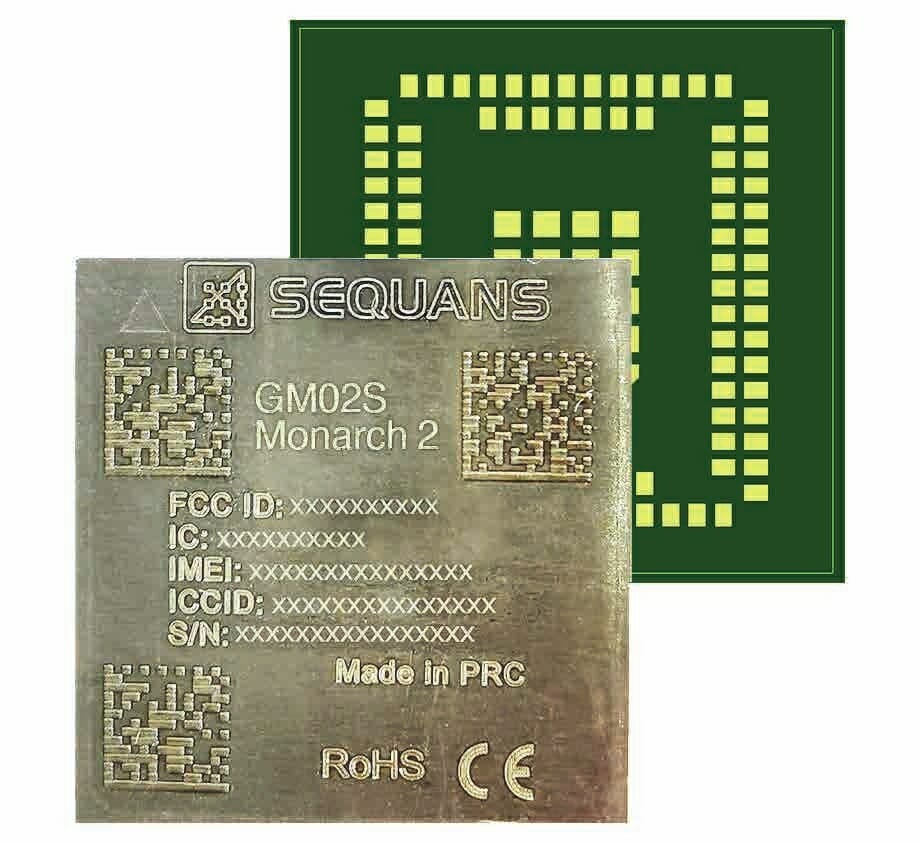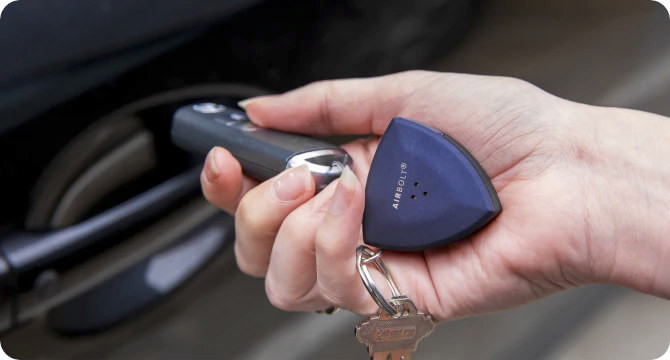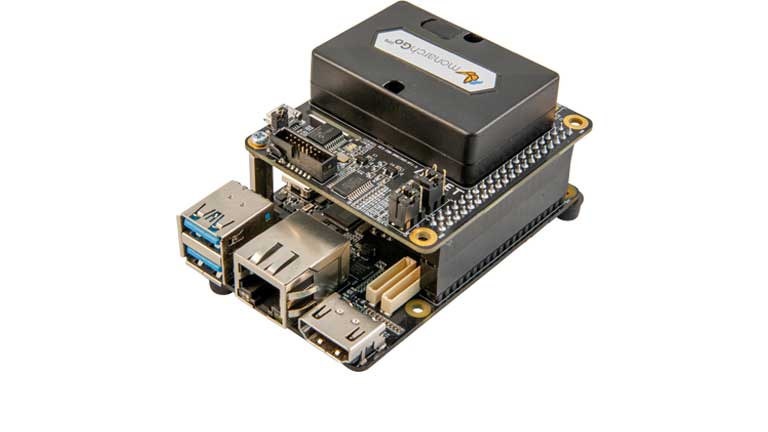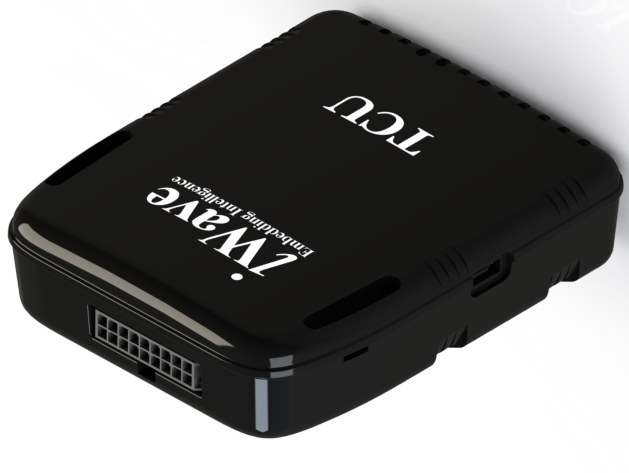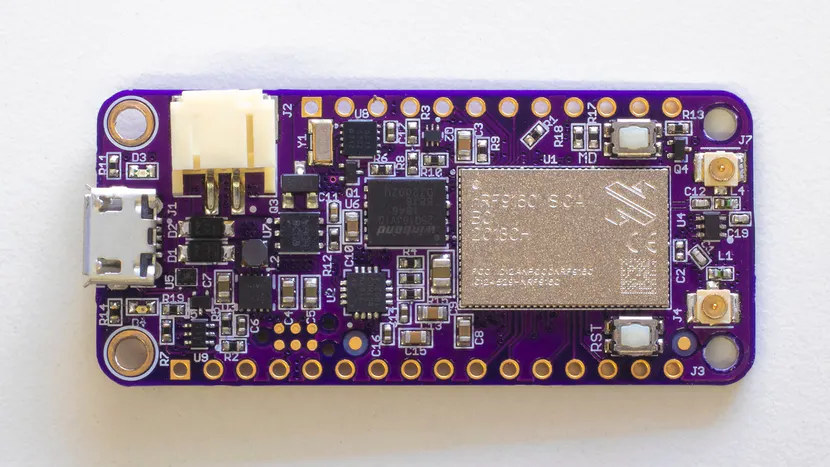I’d normally view LoRaWAN and LTE IoT standards such as NB-IoT or LTE Cat-M (aka LTE-M or eMTC) as competitors, but The Things Industries and Deutsche Telekom partnered to launch an IoT gateway with both LTE-M and LoRaWAN capabilities together with associated services. We do not have much information about the hardware, but it is a LoRaWAN gateway designed by MikroTik that connects to an LTE-M backhaul and to The Things Industries’ device and data platform. If the picture above does indeed represent the actual gateway it should also be equipped with two PoE capable Ethernet ports, and an RS485 terminal block, plus a USB port and a SIM card slot. The solution would mostly be used for smart buildings at first taking advantage of the superior signal penetration of LTE-M. Sensors would send data to the LoRaWAN gateway which then, would forward it to the cloud over LTE-M. This […]
Actinius launches nRF9160 SoM and XBee module with NB-IoT, LTE Cat-M, and GPS
Last year, Actinius launched Icarus IoT Board equipped with nRF9160 SiP providing GPS & NB-IoT connectivity in Adafruit Feather form factor. The company is now back with more compact Nordic Semi nRF9160 hardware, namely the tiny 28×18.5mm Icarus SoM with built-in eSIM, as well as Icarus Bee XBee module that incorporates Icarus SoM plus a nano-SIM slot, as well as an RGB LED and a user button. Icarus SoM The module comes with the following specifications: SiP – Nordic Semi nRF9160-SICA system-in-package with Arm Cortex-M33 MCU, 1024 KB flash, 256 KB SRAM, and LTE-M (eMTC), NB-IoT, and GPS connectivity Storage – 64Mbit SPI flash On-board eSIM Antennas – 2x u.FL connectors for LTE and GPS Sensor – Accelerometer I/Os – 2x 20 castellated holes with GPIOS, I2C, SWD, Reset, SIM card signals, and power pins Supply Voltage – 3.3V Dimensions – 28 x 18.5 mm The multi-layer module is designed […]
Notecard LTE Cat-M / NB-IoT M.2 modem sells for $49+ with 10 years of connectivity
If the IoT is ever going to take off, it needs low-cost hardware and connectivity. LoRaWAN is free, apart from the hardware costs, but for projects that need wider coverage and/or higher bitrate cellular connectivity is the way to go and we’ve seen in the past that Hologram offers a free developer SIM card for global IoT projects plus some low-cost cellular IoT plans, as well as 1CNE plans to offer a 10-year plan for 10 Euros. Blues Wireless has taken a different approach as they combine hardware and cellular connectivity with their Notecard LTE-IoT modems (LTE Cat 1/Cat M or NB-IoT) shipping for 10 years of connectivity for up to 500MB data. Notecard has four variants with the following key features and specifications: MCU – Arm Cortex-M4 MCU with 2MB flash Cellular connectivity NOTE-NBGL-500 – Narrowband Cat-M/NB-IoT/GPRS (Global) via Quectel BG95-M3 modem NOTE-NBNA-500 – Narrowband Cat-M/NB-IoT (North America) via […]
Sequans Monarch 2 GM02S LTE IoT module is “5G-ready” for “Massive IoT”
A couple of days ago, Sequans published a press release announcing the availability of Monarch 2 GM02S “5G-ready” LTE-M/NB-IoT module with power consumption further reduced by 60 percent, featuring an GSMA-compliant integrated SIM (ieUICC), and designed for “Massive IoT” applications. Wait… What is “Massive IoT”? Ericsson explains: Massive IoT refers to applications that are less latency sensitive and have relatively low throughput requirements, but require a huge volume of low-cost, low-energy consumption devices on a network with excellent coverage. The growing popularity of IoT use cases in domains that rely on connectivity spanning large areas, and are able to handle a huge number of connections, is driving the demand for massive IoT technologies. I see… That’s what I used to call LPWAN (Low-power wide-area network) applications, but for sure “Massive IoT” sounds much more cool. Monarch 2 GM02S Let’s go back to the module with Sequans Monarch 2 GM02S key […]
Tiny, Waterproof AirBolt GPS Tracker Works with LTE-M and NB-IoT Cellular Networks (Crowdfunding)
We’ve previously covered small waterproof LTE Cat M1 and NB-IoT GPS trackers such as Mictrack MT825, but AirBolt GPS tracker offers another option and promises an even longer battery life of up to 12 months. At 37 x 34 x 11mm, AirBolt GPS may also be the world’s smallest waterproof GPS tracker on the market, as well as the lightest at just 21 grams, both of which are characteristics that make the tracker especially suitable for pets like cats and dogs, as well as track luggage, keys, bicycles, etc… AirBolt GPS tracker key features and specifications: SoC(s) Unnamed, but considering Nordic Semi is listed as a partner it should be nRF9160 SiP with Arm Cortex-M33 MCU core, 1024 KB flash, 256 KB SRAM, NB-IoT, LTE Cat M1, and GPS connectivity There’s also Bluetooth 5.1 so one of the nRF52 chips might also be included. Connectivity Bluetooth 5.1 with long-range and […]
Monarch Go Pi HAT Adds LTE Cat M1 Connectivity to Raspberry Pi Board
After introducing Renesas ZMOD4410 Indoor Air Quality HAT for Raspberry Pi earlier this month, Avnet is back with another Raspberry Pi HAT namely Monarch Go Pi HAT that adds LTE Cat M1 connectivity to Raspberry Pi boards and other compatible SBC’s with a 40-pin GPIO header. The expansion board gets its name from Sequans Monarch Go LTE-M modem itself based on the Sequans Monarch GM01Q LTE IoT module that supposed to support both LTE Cat M1 (eMTC) and NB-IoT. The solution is certified by various operators in North America, Europe, and Asia, and ships with a Verizon ThingsSpace IoT SIM. Monarch Go Pi HAT specifications: LTE IoT Connectivity Sequans Monarch Go LTE modem with Cat-M1 (& NB-IoT?) connectivity Pre-installed Verizon ThingsSpace IoT SIM USB – Micro USB port for debugging and programming Expansion MikroElektronika shuttle click site with 3.3V I/O: I2C, SPI, GPIO, UART Voltage I/O translator – 1.8V to […]
iWave Telematics Control Unit Supports GPS, 4G LTE, WiFi, and Bluetooth
We’ve often written about iWave Systems’ single board computers, development kits, and systems-on-module, but the company has also been offering automotive products such as a Linux based OBD-II Dongle. And they’ve just introduced a new one called Telematics Control Unit (TCU) based on an Arm Cortex-A7 processor and offering GPS, 4G LTE Cat 4/1/M1, WiFi 5, and Bluetooth 5.0 connectivity for vehicle fleet management and insurance companies that want to know how drivers behave… iWave Telematics Control Unit (TCU iW-G26) specifications: Processor – Arm Cortex-A7 based CPU @ 792MHz (likely NXP i.MX 7ULP) System Memory – 256MB DDR3L SDRAM Storage – 4GB eMMC Flash Connectivity 4G LTE Cat 4, Cat 1, Cat M1 (eMTC) 802.11b/g/n Wi-Fi 4 or 802.11b/g/n/ac Wi-Fi 5 (Hotspot & Station mode) Bluetooth 5.0 GNSS – GPS/A-GPS receiver with antenna Sensors – 3-axis accelerometer, 3-axis gyroscope, 3-axis magnetometer OBD Features & Protocols 12V Power Input from TCU […]
nRF9160 Feather LTE IoT and GPS Board Launched for $99
Nordic Semi nRF9160 is a system-in-package part of nRF91 series offering NB-IoT and eMTC (LTE-M) IoT connectivity, as well as assisted GPS. The package is now accessible on a board following Adafruit Feather form factor. Made by Circuit Dojo (Jared Wolff), nRF9160 Feather board supports both CAT M1 LTE and NB-IoT, can be powered by a USB power adapter or a LiPo battery and runs Zephyr OS via the nRF Connect SDK. nRF9160 Feather specifications: SiP – Nordic Semiconductor nRF9160-SICA LTE-M/NB-IoT/GPS SIP with Arm Cortex-M33 MCU, 1024 KB flash, 256 KB SRAM Storage – Onboard 4MB NOR flash (note: upgraded from initial 2MB) Cellular Connectivity – LTE Cat-M1 (eMTC) and LTE NB1/NB2 (NB-IoT) plus 4FF SIM card slot, and u.FL connector for an external antenna GNSS – Built-in assisted GPS support plus u.FL connector for an external antenna Expansion – Feather I/Os (12+16 through holes) with digital and analog I/Os, […]


